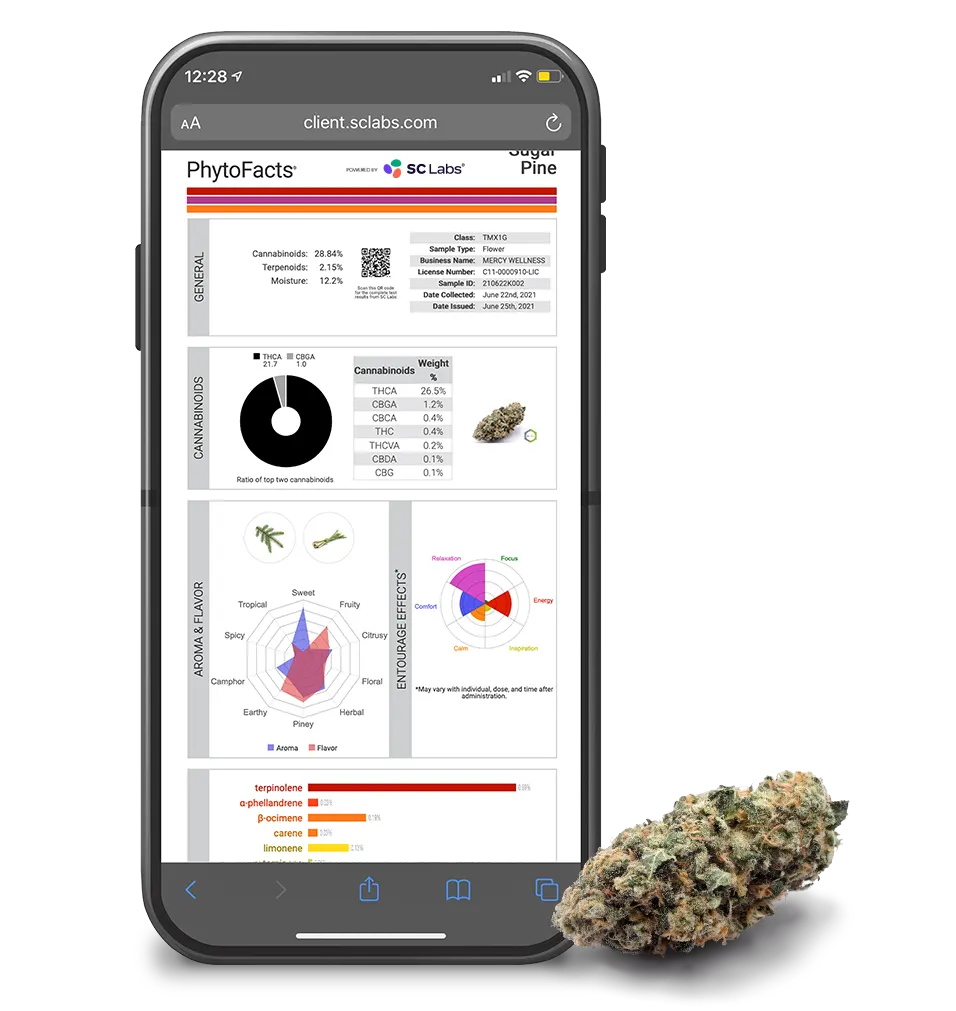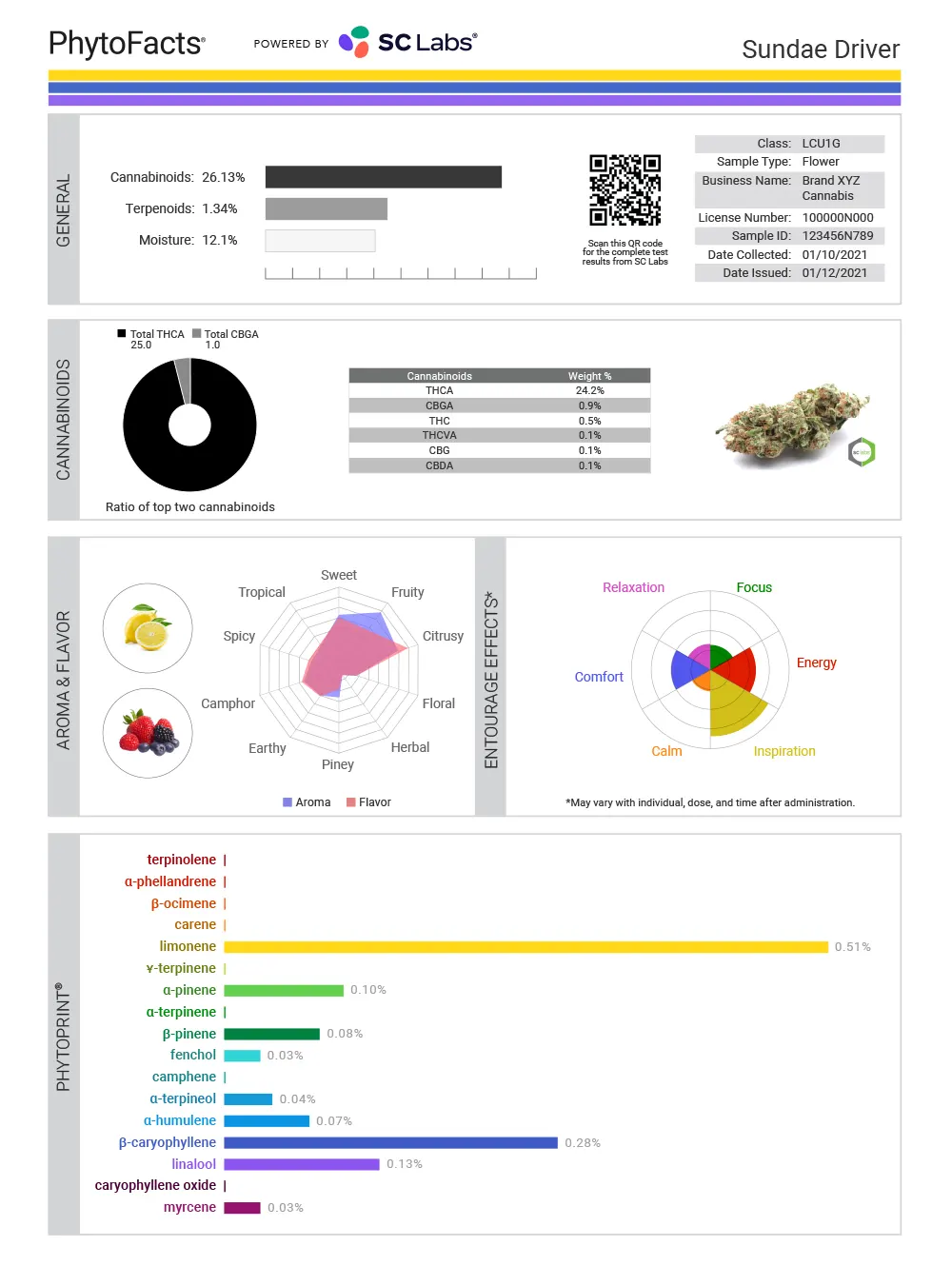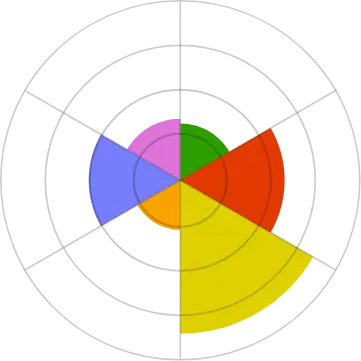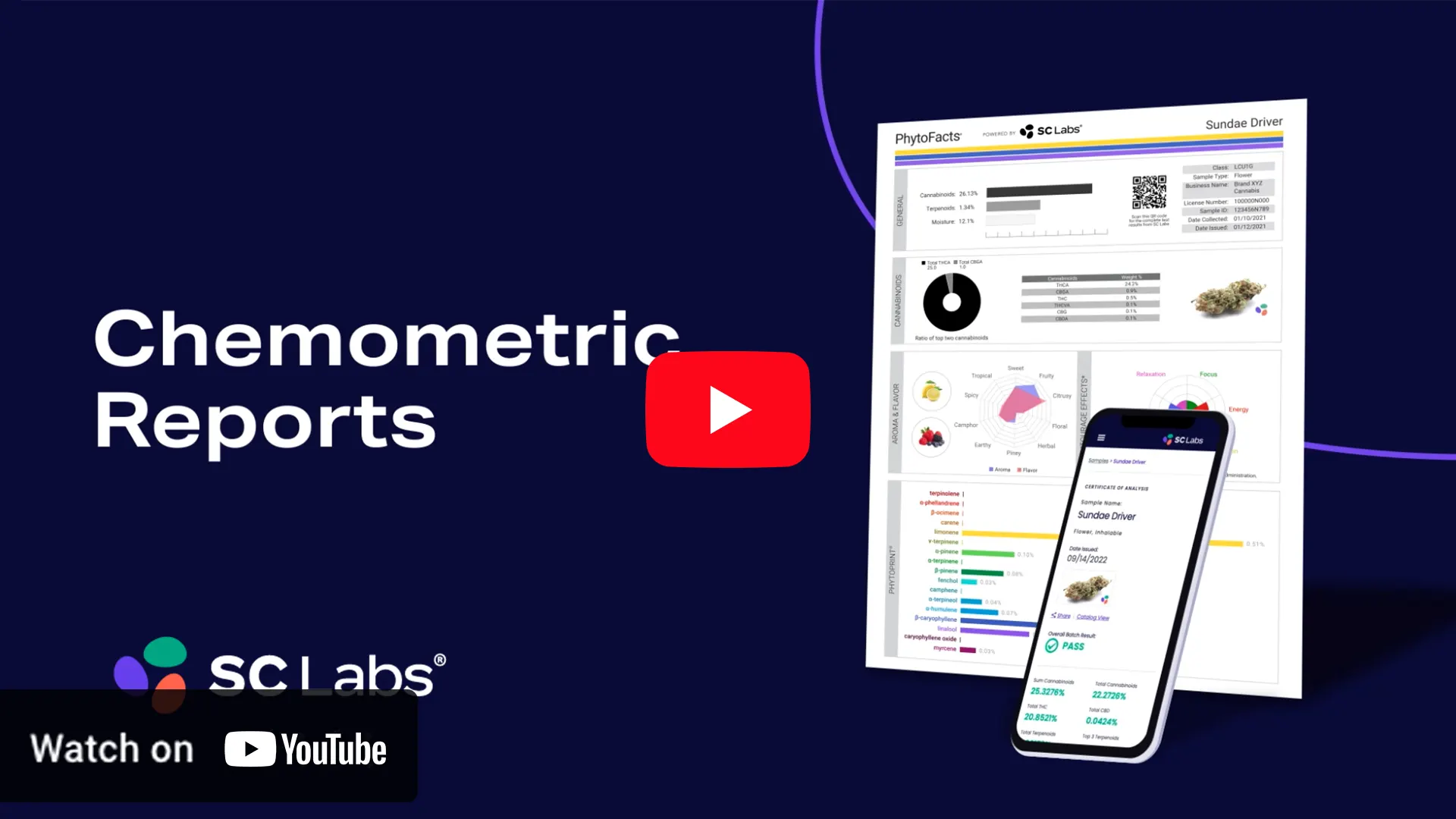It’s time to make your data actionable. Since 2010, SC Labs’ chemometric classification research has supported and validated the reporting algorithm.
Advanced visualization reports are updated in real-time and display a complete chemical profile of cannabis or hemp products. Take a closer look at our report below.

Have a look for yourself
For flower and concentrates, the report provides business buyers and consumers a consistent and easy way to evaluate the product prior to purchasing or consuming.
The suggested entourage effects are displayed on a polar area chart with six categories: Relaxation, Focus, Energy, Inspiration, Calm, and Comfort. What do these mean?
Learn more about terpene testing and Chemometric Reporting

Entourage Effect Descriptions
Effects can vary depending on the product, the individual, and the time after administration. The strength of the anticipated effect is indicated by the number of concentric circles in the chart.
A relaxing terpene influence on cannabinoid pharmacology that is often represented by decreased energy levels and diminished mental acuity, and can also be perceived as physical heaviness.
A comforting terpene influence on cannabinoid pharmacology that is often represented by a perceived state of physical ease and a sense of freedom from constraint.
A calming terpene influence on cannabinoid pharmacology that is often represented by feelings of serenity, contentment, restfulness, and complacency.

A focusing terpene influence on cannabinoid pharmacology that is often represented by enhanced crispness in perception and an elevated ability to filter thought activity.
An energizing terpene influence on cannabinoid pharmacology that is often represented by increased rates of thought, elevated alertness, and wakefulness.
An inspiring terpene influence on cannabinoid pharmacology that is often represented by enhanced creativity, an increase in mental acuity, and reduction of mental burdens.

